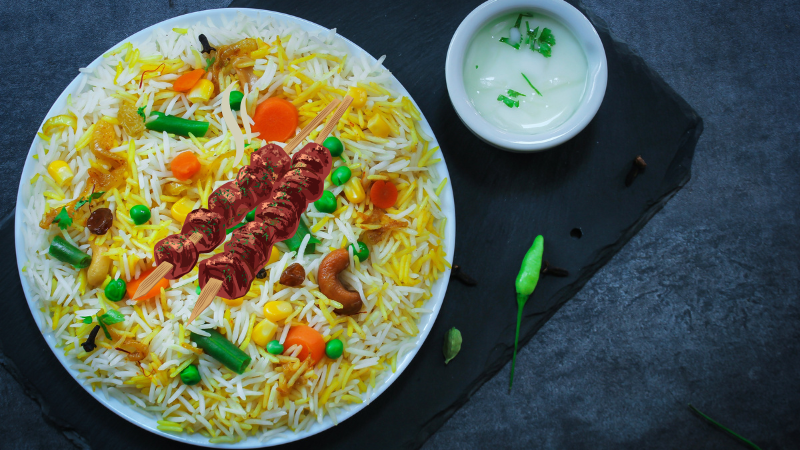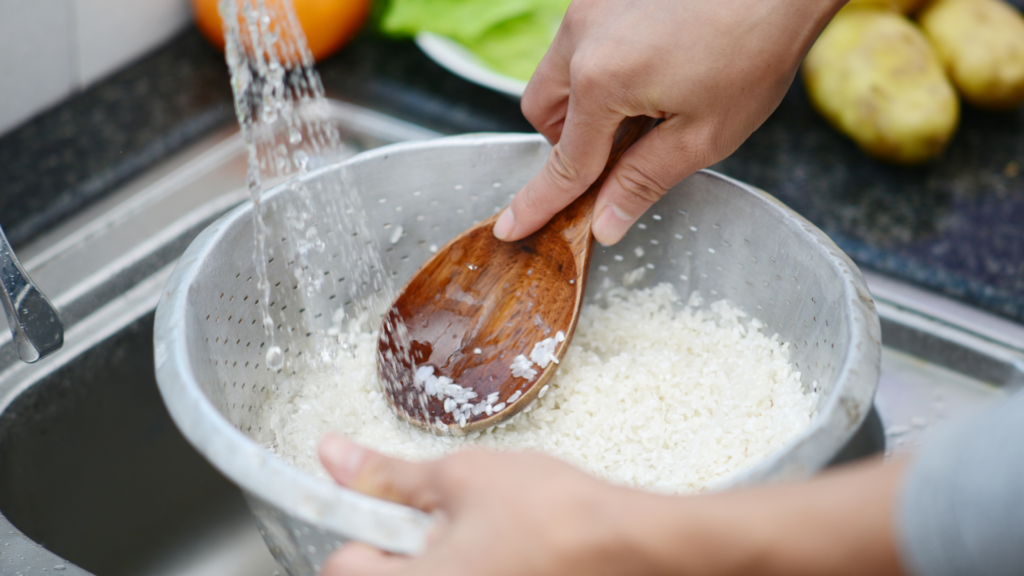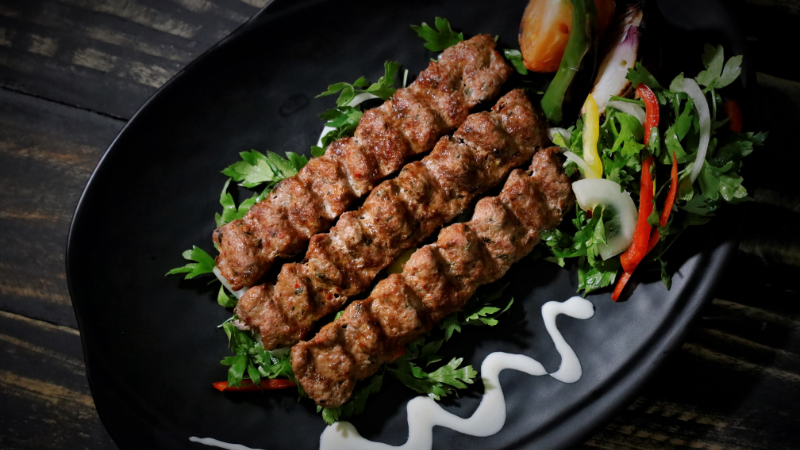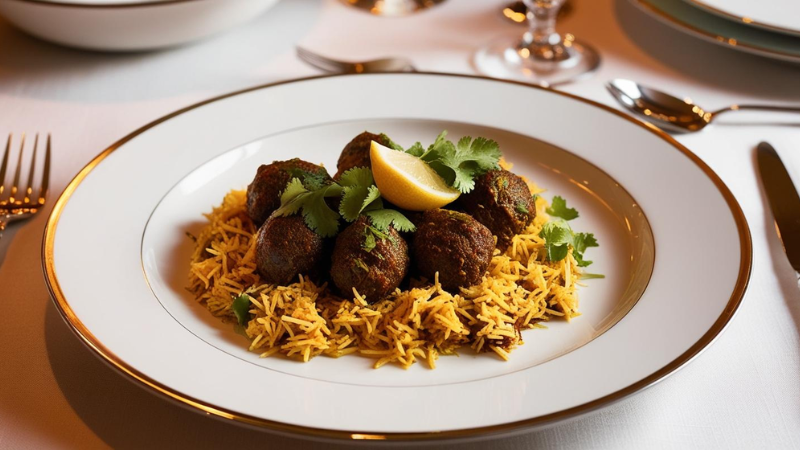Table of Contents
Introduction
Pulao and kebab, two culinary gems from the Indian subcontinent, have garnered a global following due to their rich flavors, diverse cooking techniques, and cultural significance. These dishes have traveled through centuries, evolving with each era and crossing borders to leave their unique mark on the culinary world. The fusion of rice and meat in pulao and the grilling techniques used in kebabs have become symbols of hospitality, warmth, and culinary artistry. This article delves into the history, cultural significance, and global perspective of Pulao Kebab, shedding light on how these two dishes have intertwined through time to create a beloved food experience enjoyed worldwide.

History of Pulao Kebab:
The origins of pulao (or pilaf) can be traced back to the Persian Empire, where it was a dish made with rice, meat, and spices. The history of pulao is deeply rooted in Persian culinary traditions, and the word “pulao” itself comes from the Persian word pilaf. As the Mughals invaded India in the 16th century, they brought with them a refined taste for rice dishes, including pulao, adding another layer to its rich history. Over time, this dish spread through the Indian subcontinent, evolving with regional variations while retaining its historical essence. Kebabs, on the other hand, are believed to have originated in the Middle East, carrying their own distinct history of flavor and preparation.
Cultural significance of pulao:
pulao is not just a food, but also a cultural symbol. The method of making pulao and the spices included in it vary from region to region, but its basic idea is the same. pulao pulao is especially made on happy occasions. Be it a wedding, the time after Eid prayers or any other festival, pulao pulao always holds a special place on the dining table. That is why the importance of pulao lies more in its cultural significance than its taste. pulao can be made in different ways. As explained below:
Ingredients for making pulao kebab:
For rice:
Basmati rice: 2 cups
Ghee: 3 tablespoons
Onion (chopped): 1 piece
Cinnamon: 1 piece
Cloves: 3-4 pieces
Cardamom: 2 pieces
Saffron (optional): a few threads
Salt: to taste
For kebab:
Mutton or chicken (minced): 500 grams
Onion (chopped): 1 piece
Ginger garlic paste: 1 tablespoon
Yogurt: 2 tablespoons
Green chillies (finely chopped): 2 pieces
Celery: ½ teaspoon
Black pepper powder: ½ teaspoon
Cumin powder: 1 teaspoon
Coriander powder: 1 teaspoon
Lemon juice: 1 tablespoon
Salt: to taste
Green coriander (chopped): 2 tablespoons
Egg: 1 piece
Oil or ghee: kebab For frying
How to make pulao Kebab:
Preparing the rice:

Washing the rice: First, wash the basmati rice thoroughly and soak it in water for 30 minutes.

Roasting spices: Heat ghee in a pot and add cinnamon, cloves, cardamom and fry till fragrant.

Frying onions: Add chopped onions and fry till light golden brown.

Adding water: Now add water and salt to it and let it boil.

Let it cook on low flame for 10-15 minutes so that the rice becomes soft and fragrant.
Preparing kebab:

Preparing meat: Put the mince in a bowl and add onion, ginger garlic paste, yogurt, green chillies, celery, black pepper, cumin powder, coriander powder, lemon juice, salt and coriander leaves.
Mixing: Mix this mixture well and keep it in the fridge for 30 minutes so that all the flavors combine well.
Making kebabs: Make small kebabs from the kebab mixture.
Frying the kebabs: Heat oil or ghee in a pan and fry the kebabs on medium heat until golden and crispy.
Serving the pulao kebab:

Serving rice and kebabs together: Take the rice out in a serving dish and place the fried kebabs on top.
Additional decorations: You can make the kebabs more beautiful and fragrant by sprinkling coriander and mint leaves.
Serve on a plate: Serve the kebabs with hot naan or raita.
Tips:
You can enhance the aroma and color of rice by adding saffron to rice.
If the meat used to make kebabs is soft and fine, the kebabs will be more tender and delicious.
Do not overheat the oil while frying the kebabs so that the kebabs do not burn.
Pulao is ready, it is not only excellent in taste but also a wonderful dish for any special occasion.
_____________________
you may also like:

Pingback: 5 Reasons Why Everyone Loves Quoriam Food: The Perfect Mix of Taste, Atmosphere & Service - Quoriam Foods
Pingback: Pakistani Food: 5 Powerful Ways It Celebrates Culture and Tradition - Pak Explore